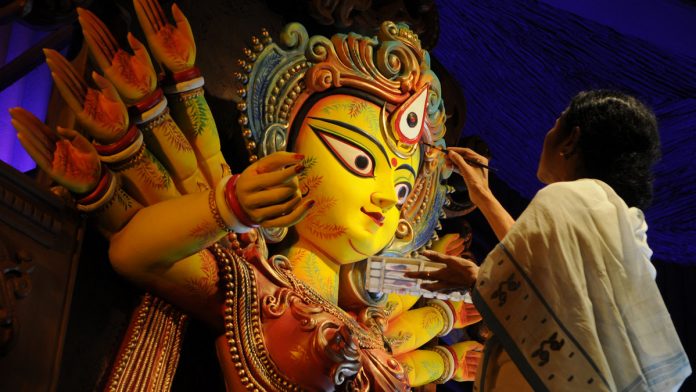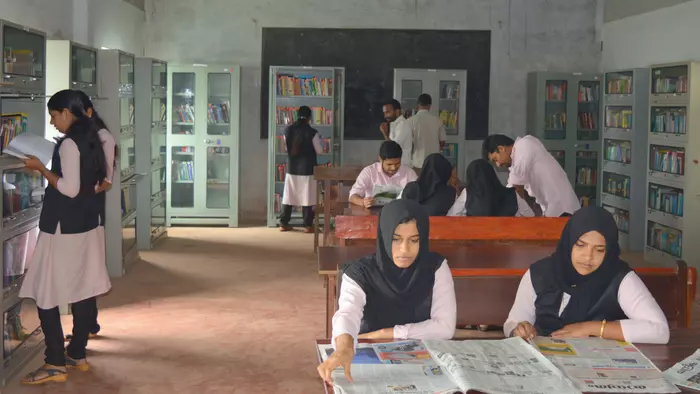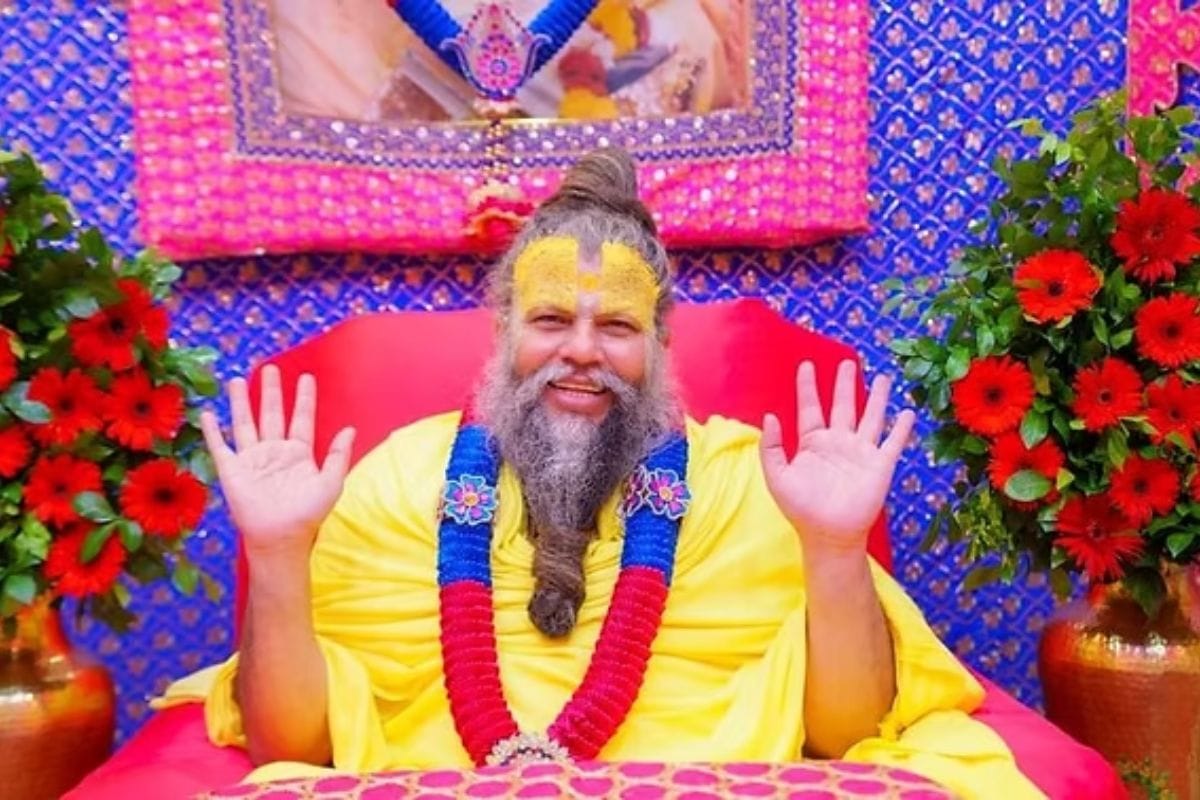Every year, the 4-5 days of Durga Puja in West Bengal come with its own promise of celebrating a female goddess—and by extension, all the women around us. The actual condition, however, does not change even amidst the lights and the sound of ‘dhaak’. There is a reason why Durga Puja is no longer just a ‘Puja‘—a long saga of tradition and ritual strictly religious in nature. Over the years, this particular Puja has gained social, cultural and lately, political currency to such an extent that it is now a full-fledged festival—starting right from Mahalaya till Doshomi or the 10th day of the Puja when the idols are finally immersed in water.

In present day, the collective consciousness around Durga Puja, partly fuelled by the advertisement industry and the media is one of progress, development and most importantly, empowerment of women. Just like the Goddess Durga defeated the demon king Mahishashur is not just an inspiration but also a metaphor. The very name “Durga” has come to symbolize power, strength, bravery—all things the society admits women today need for their struggle while none of them are willing to make the changes required to break the unfair structure. On the other hand, Durga is also a nurturer, a caregiver—she is the symbol of homeliness and family. She represents every married daughter who returns to her parents from her in-law’s house and she comes with her children. Her return is a moment of joyous celebration, her children (Lakshmi, Ganesh, Kartik and Saraswati) adding to it.
Maa Durga thus becomes a wonderful dichotomy that the society approves and ascribes to – she fiercely protects us from evil but she also looks after her family with love and care. Maa Durga successfully becomes a metaphor for the modern women.
Maa Durga thus becomes a wonderful dichotomy that the society approves and ascribes to—she fiercely protects us from evil but she also looks after her family with love and care. Maa Durga successfully becomes a metaphor for the modern women. Newspaper advertisements and magazine covers started the trend of portraying regular, ordinary women with ten hands—instead of weapons, these hands hold kitchen utensils but also technological gadgets. The modern woman handles her home and her office—both of them so skillfully that she probably does have ten hands to deal with all of it.
These advertisements look like poor validation from a patriarchal society that blatantly asks their women to overexert themselves in all spheres of life and to do it alone. She should expect no help from her husband (ironically, quite like Durga’s husband Shiva) but if she manages to achieve the impossible, she gets compared to a reverent goddess and that is all the acknowledgement she gets. In addition to that, if she does decide to buy the latest mixer-grinder as shown in these advertisements, maybe her kitchen work lessens a bit so she can focus on her children’s academics.

The entire commercialized aspect of Durga Puja is also mostly dominated by men. The Puja committees that are formed in every locality and area comprise of men and while entering the Puja pandals, it is hard not to notice their names as exhibited on various hoardings – the benefactor, the chairperson, the president of the committee are all men. Quite recently, women purohit are starting to come up and conduct marriages but all the Durga Pujas are still performed by male priests. The art and decoration of the pandals are also by male artists. From the famous pandals of Kolkata which are known for their grandeur and art to the smaller pandals tucked inside a lane in a small locality—the art and decoration is primarily by men. The various aesthetic idols of Maa Durga that we get to see in these pandals, are all the imaginations of men. The entire conception behind these pandals are from a male perspective and a gendering of art begins, extremely subtly.
Stories of sexual harassment, groping, catcalling and inappropriate touching in the crowds of the pandals are common during this time. Women, either in a group, or alone particularly become the target of eve teasing.
The only major role that women often play in this, is regressive in its own right. Women are often seen helping out the priests and gathering the appropriate things they need to conduct the rituals. They arrange the flower garlands; they cook the bhog that is offered to the Goddess. They step out of their homes and participate in a community activity but are restricted to the kind of work they would have done anyway inside their homes. The cultural aspect of Durga Puja however celebrates femininity and womanhood to the fullest—from the ‘Mahalaya’ shows that are televised at the very start to the kind of cultural programmes we see involved with each Puja.

An indispensable part of Durga Puja is a faux makeshift wooden stage built beside every pandal that provides entertainment to the people of that area for the 4-5 days of the Puja. These programmes follow a theme—that of the Mother, the Divine Goddess. Small children decked up in sarees dance to songs about Durga Puja while the older dancers often enact the entire story behind Maa Durga and how she came to her power and fought so valiantly to the tune of songs pertaining to the same theme.
Also read: The Tale Of Mahishasur And Durga: The Missing Story Of The Tribal Hero
The ’Mahalaya’ shows which are televised in the popular Bengali entertainment channels have an all-female cast that tries to imagine and re-imagine the story of Durga along with her different avatars through song, drama and dance. In order to attract more viewers, popular Tollywood actresses are often roped in to play the main part of Maa Durga.
Tollywood actresses and popular serial actresses are also invited to inaugurate various Puja pandals as is the Chief Minister of West Bengal. There has also been an instance where Mamata Banerjee was asked to paint the eyes of the goddess in a certain Puja pandal.

Stories of sexual harassment, groping, catcalling and inappropriate touching in the crowds of the pandals are common during this time. Women, either in a group, or alone particularly become the target of street sexual harassment. For all their subsidizing and rewarding the different Puja committees, the state machinery fails to make the streets safe for its women.
Also read: Durga Puja: Whose Destruction Are We Celebrating Exactly?
A contradictory festival in itself, Durga Puja is supposed to be that time of the year where the society embraces a daughter with open arms while also passing subtle derogatory comments when a girl is wearing shorts as a part of her festive apparel. Bright and shiny on the outside, the festival of Durga Puja promises to truly worship female power or Nari Shakti but ends up being a dichotomoy—of joy and also of oppression, which somehow gets exacerbated.
Featured Image Source: Her Zindagi
About the author(s)
Sukanya Bhattacharya is a postgraduate student at Tata Institute of Social Sciences, Mumbai. She is interested in looking at feminism and gender through the lenses of popular culture, social media and urban spaces. She has written for 'Asia in Global Affairs' and has also been a volunteer at 'Calcutta Rescue'. She is also an avid debater and a quizzer.




